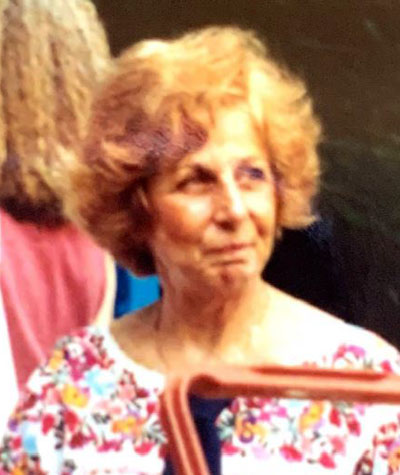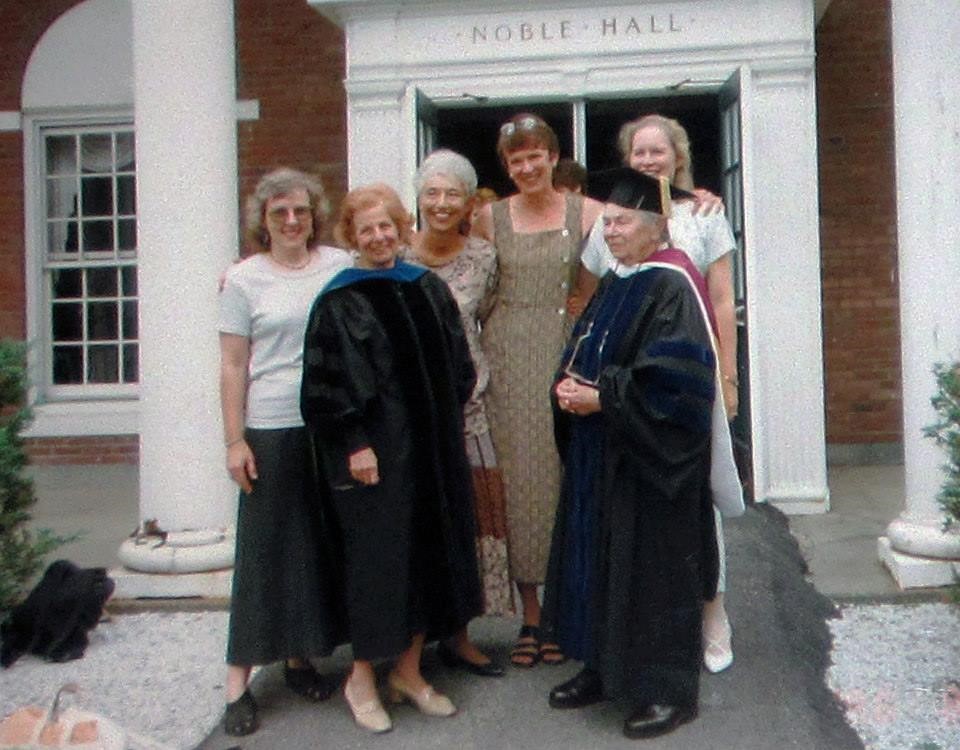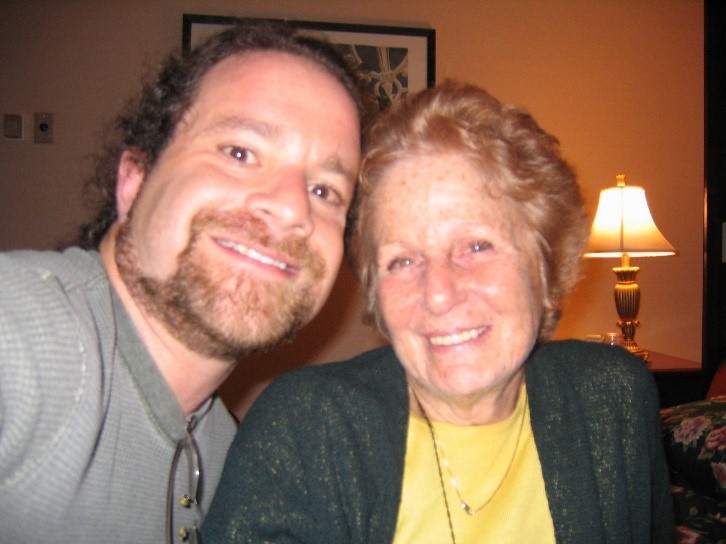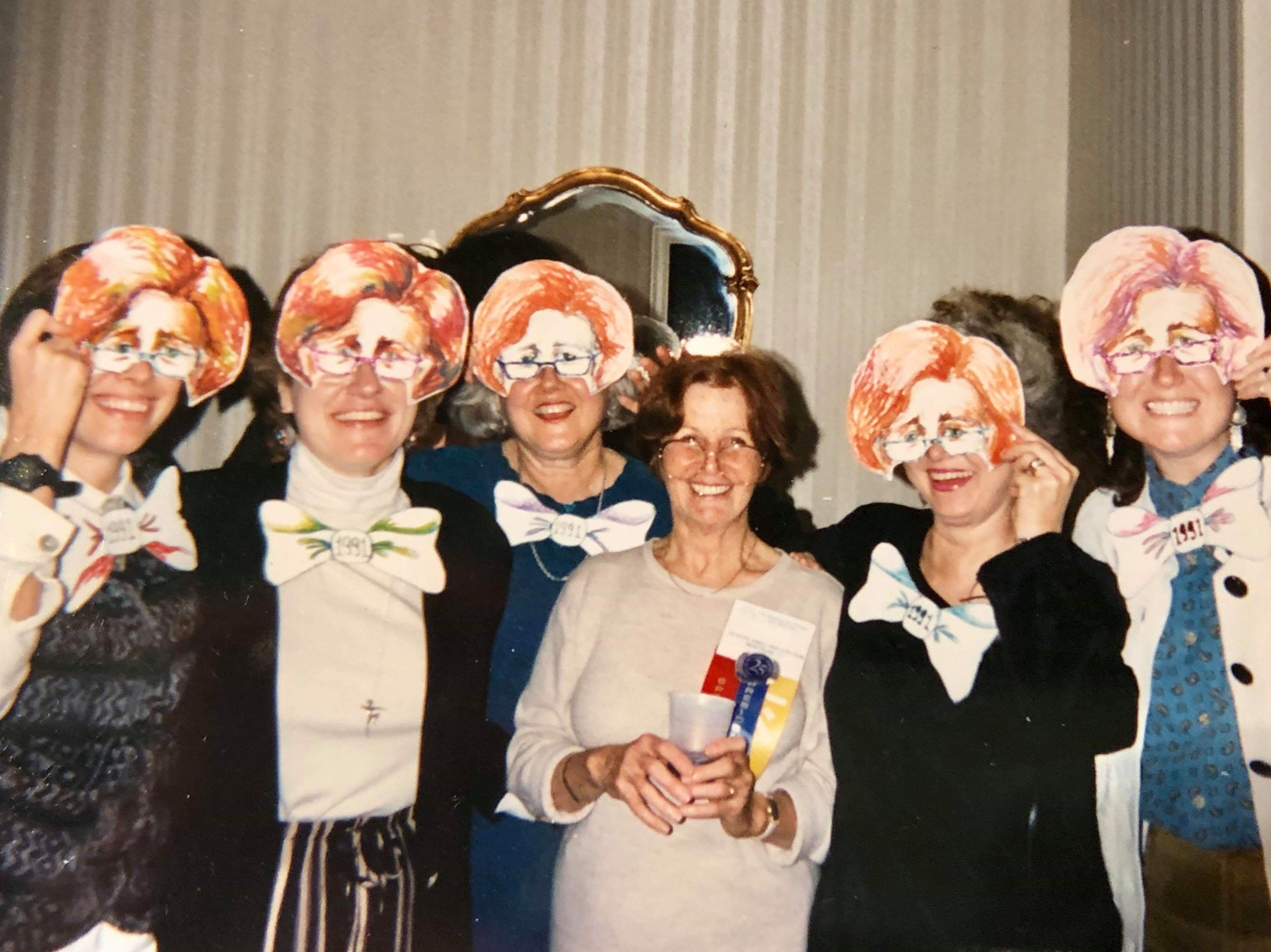September 3, 2019
 The art therapy community lost a champion when Gladys Agell, PhD, ATR-BC, HLM passed away on Sunday, June 16, 2019. Dr. Agell was the AATA’s 9th President (1983-1985) and was awarded Honorary Life Membership in 1986 in recognition for her outstanding and pioneering contributions to the Association and to the profession as a clinician, educator, researcher, and editor.
The art therapy community lost a champion when Gladys Agell, PhD, ATR-BC, HLM passed away on Sunday, June 16, 2019. Dr. Agell was the AATA’s 9th President (1983-1985) and was awarded Honorary Life Membership in 1986 in recognition for her outstanding and pioneering contributions to the Association and to the profession as a clinician, educator, researcher, and editor.
As a clinician, Dr. Agell started providing art therapy to children, adolescents, and adults in 1967. As an educator, Dr. Agell founded and directed the Graduate Art Therapy Program at Vermont College of Norwich University. As a researcher, Dr. Agell was dedicated to furthering research outcomes in the field. Over the last 30 years, AATA’s Gladys Agell Award for Excellence in Research has supported student members who have demonstrated high quality work in research. Dr. Agell also served as an Editor of the field’s first journal, the American Journal of Art Therapy (formerly founded as the Bulletin of Art Therapy by Elinor Ulman.) Read her full obituary here.
A celebration of Dr. Agell’s rich life will take place September 8th, 2019, 11 AM at Vermont College of Fine Arts, in the College Hall Chapel, Montpelier VT. If you need assistance with travel arrangements, contact Bertil Agell at agell@together.net or (802) 476-7634.
AATA invites everyone who will be joining us for our 50th conference in Kansas City, MO to attend the Annual Memorial Ceremony on Saturday November 1, 2019 from 5:30 pm to 6:30 pm.
Thank you to all the colleagues and friends who submitted the below reminiscences and notes in memory of Gladys Agell.

Vermont College, 1996. From left: Carol Cox, Gladys Agell, Judy Rubin, Katherine Williams, Edith Kramer, and Paula Howie. Photo courtesy of Donna Betts.
Pat B. Allen, PhD, ATR, HLM
Gladys Agell was one of a kind. I was a student in the first class of the Masters in Art Therapy program she founded at Goddard College in Plainfield, Vermont in the mid-1970s. The unique design of the program had us in residence for two summers in Vermont taking classes with a nine month internship in between the summers in whatever location we hailed from. Because Goddard was in the woods, where we all lived in little buildings on campus, it was a lot like being at summer camp. Gladys was as much camp counselor as program director. As a transplanted New Yorker she might show up one day in a chic suit carrying a Chanel bag and the next day arrive in a fringed Davy Crockett jacket. She presided over our little world with humor, a healthy dose of sarcasm and a deep love both for art therapy and for us. During our internships Gladys drove or flew around to visit each of us and observe our work with clients. Although she had an assistant in Vermont and brought in illustrious visiting faculty each summer, she was largely a one-woman show. What I remember most is her eyes, green, or hazel when displeased, nestled in that freckled face that could turn from merry to dismissive to soft in the course of one quietly delivered sentence that was equal parts tough love, loyal admiration and absolutely self-assured righteousness. She had opinions, about art therapy, art therapists, the politics of the field, and she didn’t mind sharing them. I loved arguing with her, as we often did not agree. Still, she never backed down from trying to recruit others to her point of view, and that’s a kind of love. We fell out of touch and I regret that.
Robin F. Goodman, PhD, ATR-BC
Gladys was a force to be reckoned with. She packed a powerful punch in a petite frame. A fiery red head who was mighty in stature, she had a keen mind, sharp wit, masterful hand with a paint brush, and infectious laugh. She was my mentor, teacher, boss, colleague, cheerleader, sounding board, editor, and friend. At AATA, I was on her board — she taught me the ropes — and luckily she returned to be on mine. As a fellow art therapist, she shared insights about cases, exhibited how to be a critical thinker, encouraged me as a faculty member, and commiserated over doctoral studies. She also taught me a thing or two about picking vegetables from her garden. I always wanted to do it better. She set high standards for herself and the field. In all areas of work and life, I wanted to meet those standards. I am one of so many colleagues, friends and clients who were fortunate to have been in her orbit and better for it, as is the art therapy profession. I will continue to keep her inner voice close by in my mind and heart.
Dave Gussak, PhD, ATR-BC, Vermont College, Class of 1991
“Reflections from an Agellite”
 While working on my thesis in the fall of 1990, I had reached out to another art therapy program in California, near where I was conducting my practicum. I informed a representative of the program with whom I spoke that I was attending Vermont College.
While working on my thesis in the fall of 1990, I had reached out to another art therapy program in California, near where I was conducting my practicum. I informed a representative of the program with whom I spoke that I was attending Vermont College.
She said “Oh; so you’re an Agellite.”
My cohort and I were graduating at the end of the summer of 1991. I, and a few others, had the opportunity to speak during our ceremony. When it was my time to speak, I recounted this interaction proudly, reflecting what it meant to be identified with Gladys Agell.
Gladys was the embodiment of the professional, no-nonsense scholar, therapist and academic who would forever implore her students “Don’t say—do.” She instilled in all of us a sense of community and ownership of the field, and for those of us who continued to pursue a place in our chosen profession, the desire and the right to support, shape and influence it. She was fiercely loyal to those that earned it and a barb to those she felt had not. As she challenged us to be better and to do more, we learned to challenge our clients, our students, our peers and ourselves—how we did this was up to us.
On top of all of this, she also had a wicked sense of humor—and highly appreciated this in others.
During the summer of 1990, a friend and I came across a book written about Vermont women in which she was interviewed. In response to a particular question she indicated that she was “unconcerned that only six percent of the practitioners are men” as she wished “to see the field become a women’s field, with power and prestige.”
Several weeks after, one of the other men in the program and I had a photo taken of us in which we were dressed in suits, posed with serious and strong expressions. On an 8X10 copy of this image we wrote, “For Gladys; with love, from the 6%”. We framed and gave it to her at the end of the summer. She unwrapped it and looked at it with a puzzled expression. When we explained its significance, she looked at us with her inscrutable Gladys gaze, turned and walked away silently with it tucked under her arm. It was never spoken of again.
One summer about 10 years later Gladys offered to let me stay with her and Bertil for a couple of weeks as I needed to collect some data for my dissertation in Vermont. In gratitude, I agreed to provide a lecture and workshop for the program. On that particular day I stopped by her office on campus. Prominently displayed on the wall above her desk was the framed and signed photograph.
A couple of weeks later, after collecting the necessary data and I was getting ready to leave, Gladys had a specific request. The American Journal of Art Therapy had a vacancy on its editorial board and she asked if I would be willing to take this position?
Remembering just how critical Gladys was of my writing as a student, and reluctant to let such an opportunity pass, I said “Huh. So Gladys— I thought you said I couldn’t write?”
She asked “When did I say that?”
“When I was in your class”
She looked at me, gave her Gladys pursed-lip smile, and with an extremely bright glint in her eye, she shot back:
“You can’t. But you can edit.”
I have been—and remain— a loyal, proud and now saddened Agellite.
With love, from the 6%.

Members of the Vermont College Class of 1991 celebrate Gladys during an AATA conference alumnae reception. Photo courtesy of Kathleen Lovenbury.
Wayne Ramirez, ATR, and MaryAnn Ramirez
I was saddened to learn about the passing of Dr. Gladys Agell. There are so many noteworthy accomplishments in a person’s life that are lost over time. Among Gladys’ many accomplishments is one that may be little known but I don’t want it to fall through the cracks of the passing of time. She provided a Puerto Rican Art Therapy graduate student (Vicky Gonzalez) the first opportunity to complete her practicum in her native island of Puerto Rico to meet her master in Art Therapy degree internship requirement for Vermont College at Norwich University. I believe this was the first graduate Art Therapy internship to occur outside of the United States Continent. In 1979, while my wife MaryAnn and I worked in Puerto Rico, Gladys learned that we obtained a grant from the National Committee Arts for the Handicapped to establish an Arts in Special Education program in cooperation with the Puerto Rico Department of Education at the Victor Paris Special School in Hato Rey, Puerto Rico. While it would have been considerably easier administratively for Gladys to provide her student with an internship placement within arm’s reach in Vermont, instead she took the time and made the effort to contact me (I was the only ATR in Puerto Rico) made all of the necessary placement arrangements including a site visit to Puerto Rico and shared in the observation of her student’s internship success. Gladys was a wonderful colleague and friend as well as a caring and “culturally sensitive” professional — way before it became politically correct. Gladys we will miss you and cherish the memories.
Judith A. Rubin, PhD, ATR-BC, HLM
I met Gladys before AATA was born, while we were both consulting with Margharet Naumburg and Edith Kramer. We had been told by each not to consult the other. Gladys, who was usually outspoken, confessed in her 25th AATA anniversary interview that she never told Margaret before she died, but had finally told Edith. Gladys, like each of these women, was an original, with strong opinions, but always eager to debate. She was really great fun to argue with.
When we were both on the AATA Board, she was a wonderful Education Chair, continuing the solid foundation established by her dear friend and colleague, Elinor Ulman, who founded the Bulletin of Art Therapy (later American Journal of Art Therapy), ultimately asked Gladys to be the Editor – high praise from Elinor who was also quite critical. Gladys was also close to Elinor’s buddy, Bernie Levy, co-founder of the George Washington University Art Therapy Program. Bernie was passionate about research, something Gladys valued and supported with an award given by AATA.
Gladys, Laurie Wilson, Millie Chapin and I formed a study group and met before or after AATA conferences for many years to share and discuss material. None of us had formal training in art therapy, all had learned in the pre-training program days from one or another mentor. It was one of the most stimulating group consultation experiences I ever had – plus, it was fun.
The training program Gladys started was absolutely brilliant in its design. She could invite top notch faculty for the 3-month summer intensive, while the students could intern at home. It met everyone’s needs and was beautifully organized. The students I had for internships were extremely well trained. Whatever Gladys did, it was truly excellent.
Gladys had strong opinions and was articulate as well as funny in expressing them. She willingly debated Shaun McNiff in the late 70s on the then-hot topic of art therapy vs. expressive arts therapy. I loved working with and for her, as well as becoming family friends. When I’d teach in Vermont, Herb and Bertil were building their new house. And since her mother had a house in Naples, there was a visit for many years as we were on Sanibel in the winter.
We both went back on the AATA Board while her student and friend Peg Dunn-Snow was President. Gladys was a fiercely protective mother/mentor to all of her students, so if she and I disagreed about anything she’d let me know in no uncertain terms. Even when she was mad at me, I felt admiration and affection for her. The world of art therapy has lost a terrific gal, one who made a huge difference in the discipline in many ways. She leaves a fine legacy of many outstanding trainees and many issues of the American Journal of Art Therapy.
Deborah Walsh
Gladys was a force of nature. My first recollection of Gladys was when I first arrived at the university for an orientation of the program at Vermont College. Gladys and was welcoming and informative.
Gladys was an inspiration. She was an intelligent, well informed, compassionate individual whose standards were high in all areas. Her contributions to the art therapy profession were abundant. I feel privileged to have known her as a person, teacher and mentor.
Katherine Williams, PhD, ATR-BC
“A Few Thoughts About Gladys”
Gladys was a dear friend and inspiring colleague. She was tough and tender, smart, and open to opposing views – until she wasn’t and then you knew about it. She was passionate and principled, and she could be insufferable and adorable — often at the same time. Her fine eye and artistic hand arranged a collection of striking art and handsome objects that turned her home into an intriguing and beautiful collage. She had style and panache and energy. She painted with passion and skill, and her love of art drew her to become part of the inception of the field of art therapy. But she could also be art therapy’s outspoken critic and she used her knowledge of psychology and research methods to encourage rigorous thinking and responsible clinical practices. Gladys could be a fierce enemy, and also, as I have said, the most loyal and thoughtful of friends – focusing those hazel eyes on just you, selecting the perfect gift (such as a tiny red and green can of bag balm for my winter-chapped heels or a profusion of fresh vegetables from her garden). I will never forget the sound of her calling her sheep ladies down the hill for dinner or hearing her tenderly describe the birth of their lambs. I have already practiced missing her as the Gladys I knew was fading away, and I will remember her with respect and love.
